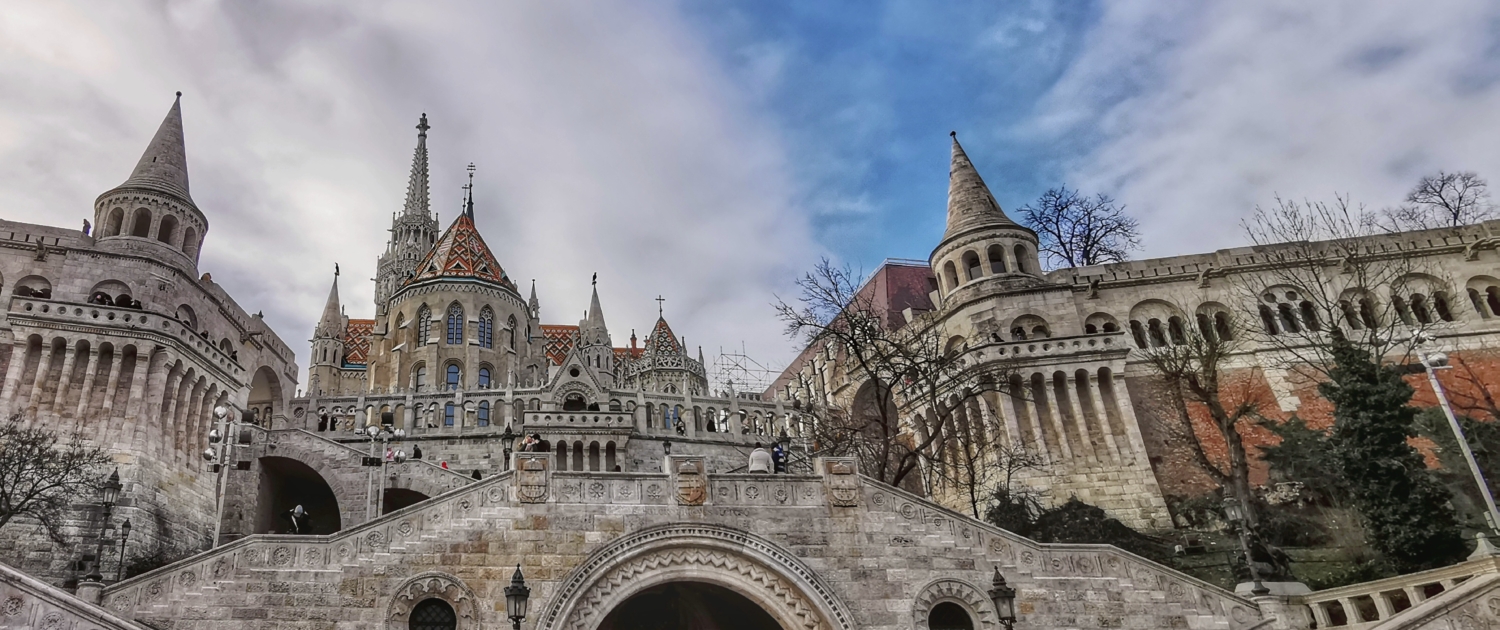The Roman Catholic Matthias Church (Mátyás templom) is located in the northern part of the cca. 70 meters tall Castle hill’s Castle district, on the Holy Trinity square (Szentháromság tér). The Castle district is famous for having baroque and neo-classical houses, churches and public buildings. Getting up to the top of the hill is easy: one can do it either by foot, public transportation (bus number 16) or by the Castle Hill Funicular. The Buda Castle district has been a UNESCO World Heritage site since 1987.
The first church on the site was founded by Saint Stephen, the first king of Hungary in 1015. In the 1240s there was a one year long Mongolian invasion in our country, and this building was destroyed with many others. The current church was constructed in the second half of the 13th century. Originally it was named after the Virgin Mary, other nicknames were and are “The Church of Mary” and “The Church of Our Lady”. The reason for this: Saint Stephen died without an official heir and on his dying bed he offered the country to Holy Mary. Therefore, many churches have the name “The Church of Our Lady” in Hungary. Today, everyone knows the church as Matthias Church, it was named after King Matthias, who ordered the transformation of its original southern tower during his reign (1458-1490).
King Matthias is one of the most important kings of Hungary. He established a professional army, improved the administration of justice, lowered the power of the barons, and helped talented individuals chosen for their abilities rather than their social statuses. King Matthias had a royal library which was one of the biggest collections in Europe, and he also patronized art and science. During his reign Hungary became the first country to embrace the Renaissance from Italy. One is his nicknames is “Matthias the Just”. Stories say that he wandered around in the country in disguise protecting the poor. His figure is a popular hero of Hungarian folk tales.
After King Matthias’ death, the country was torn apart, some parts were occupied by the Ottoman Empire. In those times, until 1686 the church became the city’s main mosque. Beautiful frescoes with Christian themes were whitewashed and the interior furnishings were stripped out. It took some time until the building regained much of its former splendor after the country was liberated from the Ottomans: they reconstructed it during the great architectural boom of Budapest in the end of the 19th century. Then again, during the second World War it was badly damaged and was largely renovated between 1950 and 1970.



